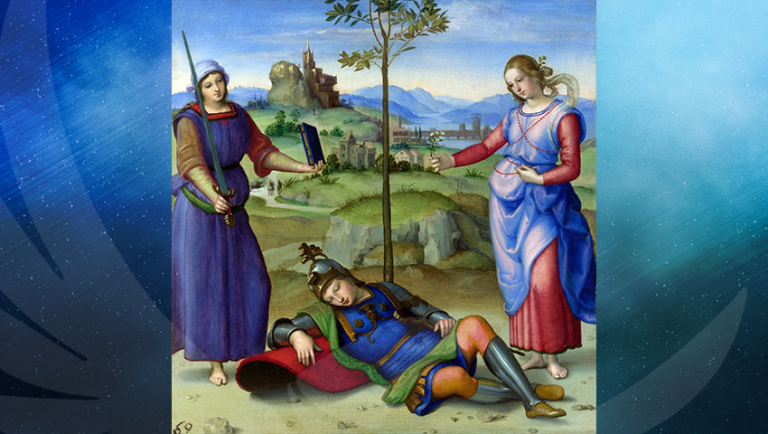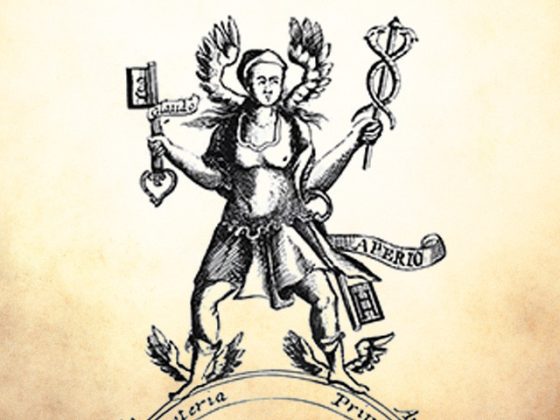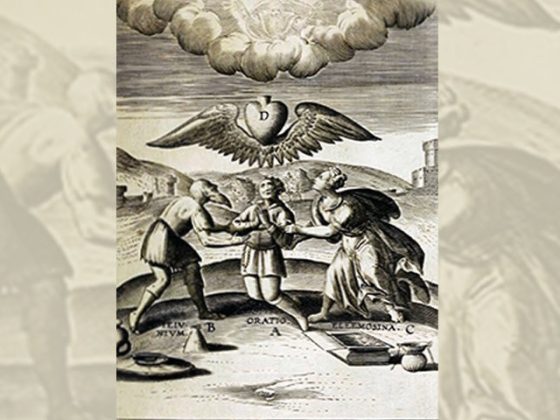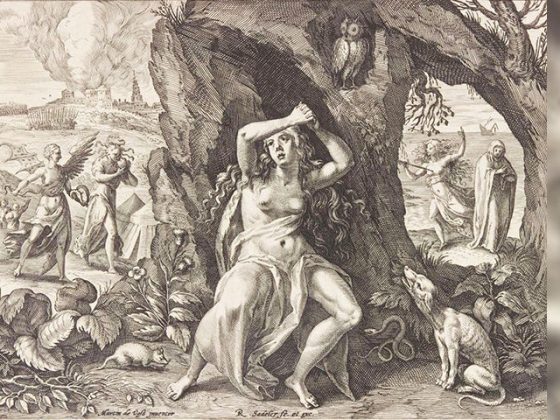Dearest readers:
I am communicating with all of you on this occasion to write to you about a work by the great Italian artist called Raphael or Raffaello Sanzio of Urbino ─1483-1520─. The title of this work is…
…THE VISION OF A KNIGHT
This work is also called The Dream of Scipio. The work was completed in 1503-1504 and is found in the National Gallery in London.
There are several interpretations of this work. Some historians think that the knight sleeping at the foot of the laurel is the Roman general Scipio Aemilianus ─185-129 BC─, and according to the commentaries he had to choose between two options: one was virtue, symbolized by a rocky and uphill path that led to a castle next to a large rock and between said rock and the castle is seen a bridge that connects them; the other option was pleasure.
Virtue is shown with her hair covered and dressed soberly. The lady who represents virtue offers him a book and a sword, emblems of knowledge and courage.
The dress of the woman who symbolizes pleasure has its fabric gathered at her hip and her blonde hair escapes from her undulating veil as she offers Scipio a sprig of flowers representing love.
The hard path of the landscape that represents virtue shows a steep rock, while the gentle meadows of pleasure descend to the shores of a lake.
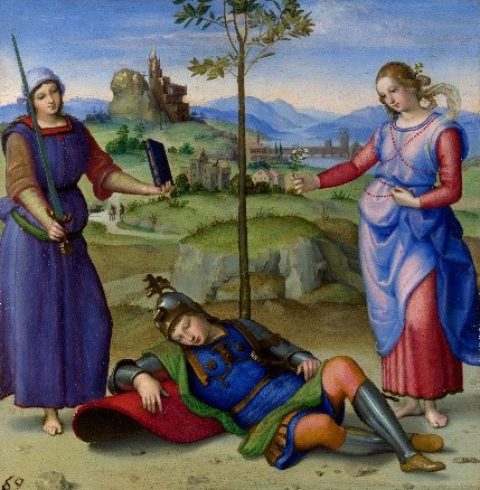
Having said that, precious reader, this artistic work is linked to the alchemical treatises that circulated at the time and that continue to be studied by lovers of the transmutatory ars, which has survived to this day thanks to contemporary Samaelian Gnosticism.
Thus, in the light of Gnosis, what this artistic expression deals with is the decision of the brave seeker of truth who needs to conquer his sword of power and the book of wisdom. These conquests require being an ally of virtue from instant to instant, and it is necessary to know how to relate to the aroma of love.
Undoubtedly, everyone who directs his steps toward eternity will direct his steps toward the rocky path, the Dry Path, which will lead him to the castle of Camelot or castle of the Being.
It is very curious that on one occasion ─Master Samael tells us─, when he had to restart his alchemical works after a magnetic pause, a lady gave him a small bunch of flowers while saying: “Feed yourself with the fragrance of these flowers …”. That was the sign ─says our Patriarch─ that he was invited again to go down to the Ninth Sphere –sex─.
There is no doubt that, in order to take possession of the sword of power, in addition to our alchemical practices, we need to set in motion the remembrance and practice of the eight virtues necessary for the awakening of the Sacred Fires, namely: knowing how to love, that there be peace, will, comprehension, fidelity ─to the wife and to the Guru─, right way of feeling, right way of thinking, right way of acting… Only by communing with these commandments can we be deserving of the gifts of the Holy Spirit.
Those who do not aspire to total liberation can, however, walk the path that leads to Nirvana, represented here by the slope that descends to the lake of our work. These are the two symbolic paths linked to the Secret Path.
It is good to point out to our dear readers the little bridge that connects the great rock with the castle of the Father. This is the bridge representing the eight years of Job, during which we are to hang our inner Judas as established in our doctrine.
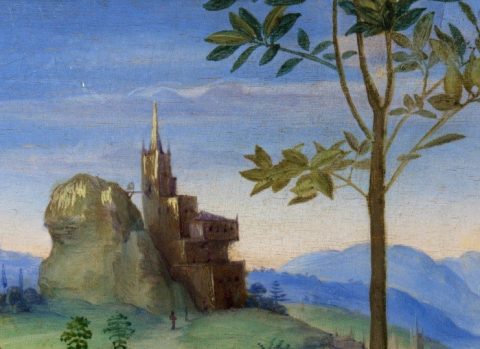
So, brothers and sisters, see that this entire subject has nothing to do with the speculative theories of an intellectualoid nature that exist everywhere all over our world…
Allow me now to offer you some sentences that deserve our reflection:
“What is impossible to correct, patience makes tolerable.”
Horacio
“With patience and tranquility everything is done…, and something more…”.
Franklin
“Art and science are not enough, but patience is also indispensable.”
Goethe
“All men recommend patience, though few are willing to practice it.”
Kempis
“Evils that are not strong enough to end life should not be strong enough to end patience.”
Cervantes
“Genius is nothing more than a long patience.”
Herault de Sechelles
DIES DIEM DOCET.
─'Every day teaches us something'─.
KWEN KHAN KHU


